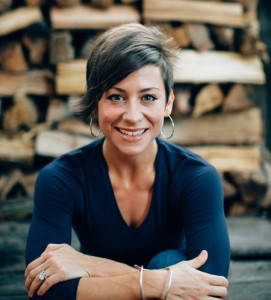What comes to mind when you hear the word, “acupuncture“? Is it something like, “Eek! Needles!” Or perhaps your response is a bit more affirmative; something more like, “Oh, yeah, I know a guy whose back pain got better after acupuncture.” Now, I bet that no matter your response, you were likely visualizing yourself, a friend, or a parent as the recipient of said acupuncture. I want to declare, here, today, that there is absolutely NO reason why we, as adults, should be having all of the fun. That only we, as adults, should be reaping all of the generous benefits of acupuncture and Chinese medicine. Yes, I’m totally suggesting needles (and a variety of other techniques) for the kiddos in your life. Seriously.
Pediatric acupuncture actually has quite a rich history. (Bear with me here while I nerd out on some fun Chinese medical history). Perhaps the first mention of Chinese pediatric medicine was in the first century BC, in the ancient classic text called the Nei Jing, where the authors describe using a form of massage called Tui Na on children (1). It wasn’t until the fourteenth to the seventeenth centuries that the writings on both the use of acupuncture and Chinese herbal medicine for the pediatric population became much more prevalent (2). It was during the Ming dynasty when renowned pediatricians discussed preventative health measures for children, including ensuring that they regularly had access to fresh air and sunlight, and discouraging the use of too much medication (3). This is one of my all-time favorite contributions to the world of Chinese pediatric medicine. I find it so insightful, especially in the all too familiar modern world of sedentary and sadly over-medicated little ones.
The twentieth century truly solidified pediatric acupuncture as a legitimate branch of the medicine with the distribution of hundreds of pediatric textbooks and the creation of pediatric departments in many Traditional Chinese Medicine hospitals (4). I was lucky enough to spend some time in one of these departments at a hospital in Harbin, China called Heilongjiang University Hospital. Children were undergoing treatment for everything from the common cold to facial paralysis using acupuncture and herbal medicine. There was also this beautiful combination, in certain cases, of Western medicine (such as antibiotics) with acupuncture. Some children were in the inpatient unit, so I was able to follow their progress on a daily basis, and some were there for a quick outpatient visit, where they received their treatment, picked up their herbs, and returned home. During this time, I was struck by not only the efficacy of the medicine, but the ease that most of the children had with the hospital environment, the doctors, and the needles.
Now, I don’t want to give the impression that it was all rainbows and unicorns. I also witnessed a few tears and just as many bummed out little ones pleading with their parents to return home. The beauty of this healing art, though, is that we, as acupuncturists, have an array of treatment tools for even the most needle-squeamish. One of my favorite ways to work with infants and kids is with a Japanese form of needle-free treatment called Shonishin. This style was developed over 300 years ago and utilizes a set of small tools to stimulate the surface of the body (5). Part of the advantage of using this form of medicine for children is that they tend to respond very quickly, often with very little input or stimulation.
With school starting and fall nearly upon us, those of us that have children or work with children know that colds, flus, and stomach bugs abound this time of year. Chinese medicine is a great way to both prevent and treat many childhood illnesses. Sore throat, earache, and hay fever (6) are all on the World Health Organization’s list of conditions where acupuncture can be an effective therapeutic treatment. There is nothing quite like treating a child with reflux or eczema or asthma, partnering with them on their healing journey, and, of course, having a little fun along the way.
Call Flow Natural Health Care today to schedule an appointment for your kiddo (and your whole family) and let’s adventure in the wonderful world of acupuncture!
1-4 Loo, May. Pediatric Acupuncture. Edinburgh: Churchill Livingstone, 2002. Print.
5 Birch, S. (2011). Preface. In Shonishin Japanese pediatric acupuncture. Stuttgart:
Thieme.
6 “WHO Official Position – Evidence Based Acupuncture.” Evidence Based Acupuncture.
2014. Web. 12 Sept. 2015.


